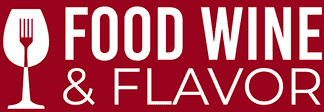When it comes to wine, France is often the first country that comes to mind. French wine regions have a long history of wine production and is home to some of the world’s most famous wines. From Champagne in the north to Bordeaux in the southwest, dozens of regions and subregions produce wines with distinct flavors and characteristics. In this article, we’ll explore some of the key French wine regions, including their history, geography, and climate, and the grape varieties that are most commonly grown there.
Wine History of France
France has a rich history of wine production spanning thousands of years. The Celts settled in the region around 1200 BC, and the ancient Greek community of Phoeceans introduced grapevines near modern-day Marseilles around 600 BC.
Once trade was well-established and lucrative, threats came from the Carthaginian tribes of North Africa and the Etruscans of Italy. The Greeks appealed to the Romans for protection and Rome sent her soldiers.
This first settlement outside of Rome was called “Nostra Provincia”, which is the modern-day French wine region, Provence.
Why were the Romans so invincible at the time? Wine.
Romans built roadways and added red wine to their water as an anti-microbial. Water around the beginning of the Modern Era was not safe to drink. Most people at that time did not travel more than ten miles from their homes during their lifetimes due to safety concerns. Roman soldiers could travel vast distances and manage large areas as they had solutions to this problem.
Romans prioritized expanding vineyards across the country wherever they traveled to keep a steady supply of health-giving grapes. Burgundy, Bordeaux, South-West France, and the Loire had established vineyards by the 1st century. Alsace followed soon after, and Champagne was under the vine by the 5th century.
In the fifth century, there were supply chain issues and cataclysmic weather events. The Roman Empire had overexpanded, and it finally fell, albeit slowly, initiating the Dark Ages.
After Rome’s fall, the Church and nobility gradually played key roles in cultivating French wine culture during the Middle Ages. Monasteries became major wine production centers, and the nobility established their vineyards. The wine was needed for Mass.
Monks were often some of the most educated people of the time and they could focus on working the vineyards and recording which varietals and methods fared best in which sites. This is the foundation of what makes French wines the gold standard by which all other wines strive and measure themselves. The French were the first to analyze, record, and perfect their wine-making processes,
It was about this same time that Clovis united a federation of Germanic tribes and conquered Gaul (the name for France by the Romans). He brokered a deal with Bishop Remi of Reims to bless a cask of wine. It is said that Clovis vowed to not let the cask run dry to defeat his enemies. In trade, he would be baptized at Reims and agreed to unite France under Catholicism and the Pope. He named his kingdom Francia (pronounced FRANK – ee – ahh)
Charlemagne assumed the throne in the 8th century. He conquered large portions of Germany and Italy for the kingdom. Pope Leo III rewarded his religious fervor by crowning Charlemagne Holy Roman Emperor.
Cologne, Germany – April 21, 2010: Stained Glass (1865) in the Dom of Cologne, Germany, depicting Charlemagne, Holy Roman Emperor
Eventually, Charlemagne’s kingdom was divided between three of his grandsons. This division of Frankish, German, and territories in between led to future wars all across Europe. Next came the threats of the Norsemen…
In 911, Charles III gave the Northwestern portion of France to the Norsemen in hopes of keeping peace. Eventually, this name was truncated to Norman and then Normandy.
Duke of Normandy, invaded England in 1066 and claimed the English throne. This is important because his great-grandson held the titles of Duke of Normandy, Count of Anjou, and Maine as well as being in line for the throne of England.
Once Henry (Plantagenet) married Eleanor of Aquitaine, this power couple controlled nearly all of western France. This became tenuous a few years later when Henry ascended the throne of England to become King Henry II. (For those of you Robin Hood movie fans, this would be the father of King Richard – aka Sean Connery)
On November 1st, 1179, King Phillip was crowned King of France, the first of this new realm.
Cathar country (France). Road to Maury, located northwest of Perpignan, is a wine town. The landscape is unique: a long corridor of vineyards, protected to the north by the Corbières chain, dominated by castles and the foothills of the Pyrenees.
Occitania, bordering the Mediterranean, used the language of Lange https://www.britannica.com/topic/Catharid’Oc. This was the language of troubadours and poets. Pope Innocent III waged a war against the Cathar sect of Christianity in 1209. Bloodied and broken, this final area (and now the French wine region) was annexed to France.
In 1309, the papacy was moved from Rome to Avignon. A total of seven popes reigned at Avignon. John XXII built himself a summer palace called Chateauneuf-du-Pape.
Vineyards at Chateauneuf du Pape, Provence, France
At this time, the English King was technically a vassal of France due to all of his land holdings (see Henry Plantagenet above). When he refused, the Hundred Years War was initiated (1337 – 1453). At the same time, French King Charles VI disowned his son, King Charles VII.
What a mess.
Joan of Arc enters the picture and rides to Chinon (note: there’s a wonderful red wine from this same area in The Loire) to meet with Charles VII. Her sole purpose was to convince him to retake the throne and expel the English from France – which is exactly what he did. By the way, the Duke of Burgundy turned Joan in to be executed for her braveness.
Chaos, poverty, and plagues were now running rampant. The Bubonic Plague arrived on the shores of Marseilles, killing 30-50% of all the people where it landed.
Burgundy was so short of workers to tend the vineyards that most went from Pinot Noir to Gamay from neglect. Burgundy and most other Northeastern duchies were defeated by 1477. France was consolidated to principally what we know of it today.
At this time, the Renaissance and French wine regions blossomed. Palatial estates were built in The Loire. French nobles were converting to philosophies like that of Martin Luther and John Calvin. Why? Because questioning the pope undermined the crown and weakened the royals. This strengthened the positions of nobility.
In the 17th century, the Dutch drained the swamp of Bordeaux and the Canal du Midi created transportation from Toulouse to the Mediterranean. The Royal Court was moved to Versailles – with nearly 5,000 inhabitants. All things new and novel were valued there…and Champagne was their crowning glory!
By the 1700s, the wine trade flourished as wealthy merchants invested in vineyards, making wine a significant export. But while the rich and powerful dined like kings, the rest of France was broken and destitute, unable to fight off illness and malnutrition. The French Revolution began in France in 1789. The more secular areas like Bordeaux remained untouched, but wine regions with a heavy religious influence, like Burgundy, were decimated.
Napoleon went on to name himself emperor and waged war against England, Russia, and Austria. He was eventually defeated but implemented the Napoleonic Code of Inheritance, mandating that all holdings be equally divided among every child (male or female) in the family. We will see this clear impact in Burgundy vs. Bordeaux today.
In 1842, France constructed a national train system, allowing for wines to be transported throughout the country for sale. As we’ll see in Bordeaux, there were laws instituted to protect certain regions and their market dominance.
The Expedition of Universelle was held in Paris, establishing the most important houses of Bordeaux as well as the pricing scheme that generally holds today. Phylloxera devastated the vineyards beginning in 1863.
The Champagne wine region was especially hit hard during WWI and WWII. The push to create national wine laws is meant to protect the “signature” of a place – in other words, the importance of terroir.
Today, France is a global leader in wine production, known for high-quality and complex wines. And the evolution is not over… There are emerging French wine regions, such as Savoie, Jura, and the South-West that are bringing us indigenous grapes and new styles we have yet to try.
What is important to understand is that France is the model that other winemakers strive for. Although many other copies or different wines have been developed, we still clamor for French wines. If you are truly interested in wine, I recommend that you at least familiarize yourself with the evolution and importance of France and French wines in the evolution of wine.
Related Posts
France: Champagne Wine Region – The Sparkling Jewel of France
France: The Loire – Amazing Wines for Absolutely Every Taste
Bordeaux: Left Bank – Native Home to Cabernet Sauvignon
Bordeaux: Right Bank – Native Home to Merlot
Bordeaux: Entre-Deux-Mers & Sauternes – Vibrant and Crisp vs Killer Lush White Wines
France: Burgundy – Beautifully Complex Wines that are Incredibly Easy to Adore
France: Beaujolais: A Light Red Wine Great for Picnics and Warm Weather Fare
Post Created: Jan 6, 2023




















0 Comments